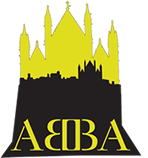Orvieto, an Umbrian city of ancient origins, is a perfect example of a city that blends history, art, nature and good food in harmony. A city defined as “tall and strange” due to its characteristic elevated position on the valley of the river Paglia. Perched on a large tuffaceous boulder, Orvieto has lived through different eras with alternating fortunes between periods of expansion and others of abandonment. Tuff, a material of volcanic origin that has represented a great resource for the inhabitants of the cliff, a rock present in great abundance and easily excavated and worked. For this reason, most of the buildings in Orvieto were made of tuff, as well as many are the underground places excavated to make wells or cellars.
ETRUSCAN ORVIETO
“Velzna” (so called the city in Etruscan times) was an Etruscan city of great importance, from this time you can still appreciate and see the necropolis of the Crocifisso del Tufo at the foot of the cliff, the remains of an Etruscan temple and the large amount of interesting finds (vases, furnishings, sarcophagi) exhibited in city museums. Recently discovered, in an area called Campo della Fiera, a large site of Etruscan origin that many scholars have identified as the great federal sanctuary of the Etruscan league, better known as “Fanum Voltumnae”. With the Etruscans the city reached a high level of social and economic well-being, so much so that it became one of the most important cities in all of Etruria until 264 BC, the year in which it was conquered and destroyed by the Romans.
MEDIEVAL ORVIETO
Orvieto, after the end of the Etruscan civilization due to the violent Roman conquest, experienced a long period of neglect and decadence, only in medieval times did the city return to populate living an era of great splendor and expansion, especially when Orvieto established itself as one of the most powerful in central Italy.
Even today the historic center and the main city monuments are related to the medieval period. What at the time was a geographical breakdown of the three different powers that guided the city (religion, politics and commerce) are still well represented today by the three main squares, each with its own symbolic building. Religion in Piazza Duomo with the magnificent cathedral, today’s Piazza della Repubblica with the elegant Palazzo Comunale and finally Piazza del Popolo with the majestic Palazzo del Capitano del Popolo.
From the medieval period, the urban structure of Orvieto is still appreciated today with its most important monuments built at that time: the Duomo, Palazzo Soliano, the Palazzo Comunale and that of the Capitano del Popolo, the Torre del Moro and the Albornoz Fortress.
A very characteristic and typical cross-section of the city is then represented by the old medieval quarter with its fortified walls and characteristic alleys and streets such as, for example, the steep Via della Cava. This, in the past, was one of the main access routes to the city and the presence of the ancient Porta Maggiore testifies.
UNDERGROUNDS OF ORVIETO
If Orvieto enchants for its beauties and its characteristic alleys, no less is the charm that its underground dimension expresses.
In fact, the Orvieto cliff hides a real underground world made up of caves, wells, tunnels: man-made works aimed at the best possible exploitation of the spaces to obtain wells from which to draw water, jumps, cellars and “dovecotes” intended for the latter, to poultry farming.
Among the most important underground attractions to visit are the wells of San Patrizio and the Cava, the caves of Orvieto Underground, the Labirinto di Adriano and the basement of the church of Sant’Andrea.
MUSEUMS
In Orvieto there are several museums, in particular the main museums of the city are located near Piazza Duomo.
The Museo dell’Opera del Duomo, adjacent to the cathedral, exhibits works of sculpture, painting and jewelery that are part of the interior of the Duomo and which, over the years, have been removed from the cathedral and now exhibited in the museum. The ancient Albèri Library is very interesting inside the Opera del Duomo museum: a frescoed room where relics are exhibited and above all the gold reliquary that houses the sacred linen stained by the blood of Christ on the occasion of the Eucharistic Miracle of Bolsena.
Two other museums located in the square are the Civico-Faina and the National Archaeological. Both boast a rich collection of Etruscan finds such as friezes, statues and sarcophagi as well as a large number of vases, amphorae and urns. Finally, on the ground floor of the elegant Palazzo Soliano, there is an exhibition of bronze works by the Sicilian sculptor Emilio Greco, who was the author of the current bronze doors of the Duomo.
